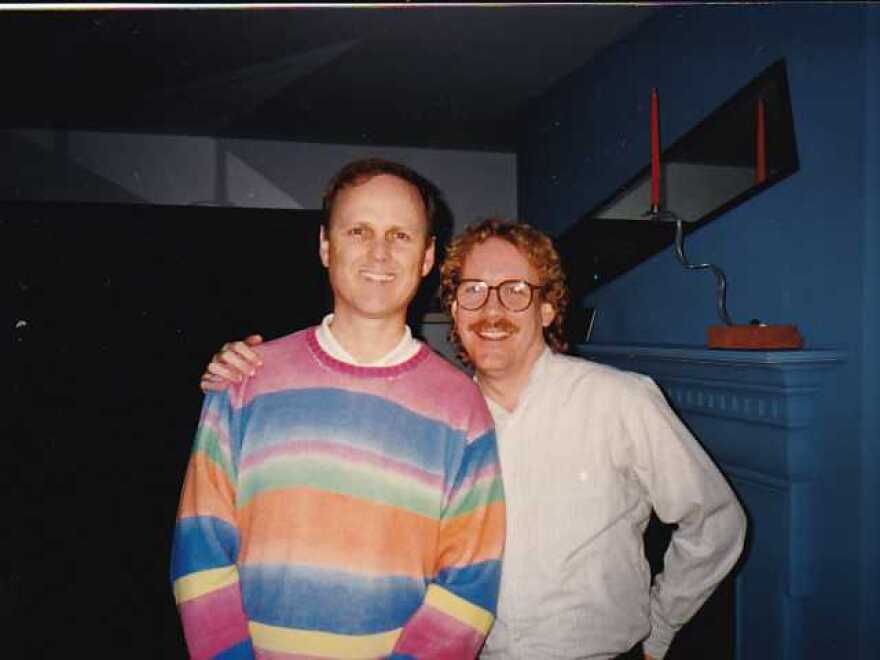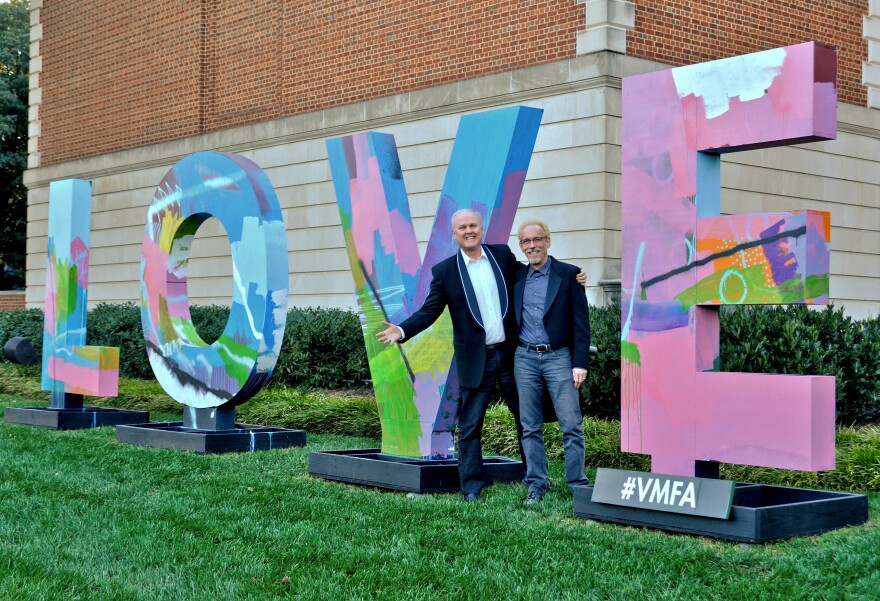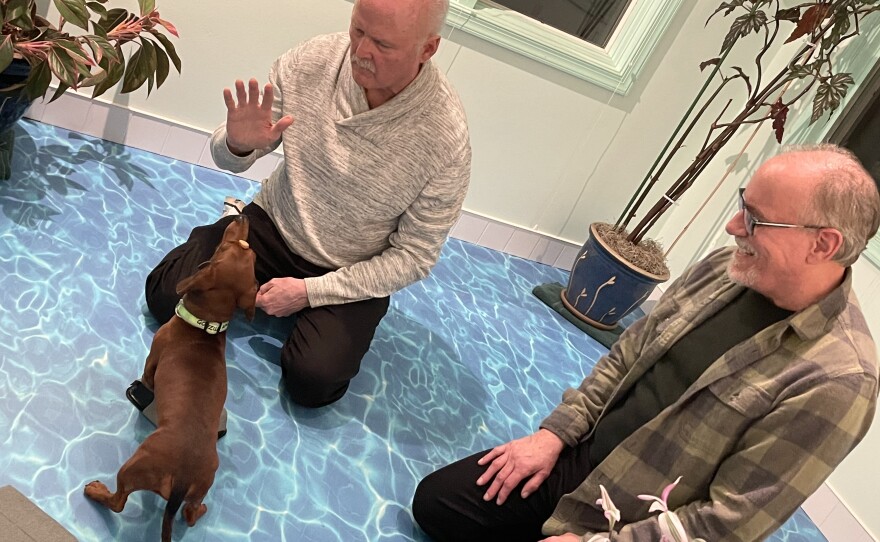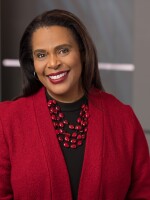If you ask Jerry Williams and Mark Reed how they met, you’ll hear a well-loved, often-told story, punctuated by moments of laughter and enhanced by their smiling eyes as they glance at one another the way that long-time couples do.
“We actually met at the YMCA,” Jerry said. “But don't get the wrong impression,” he quipped. “Actually, he was a lifeguard, and I was swimming. I got a chance to introduce myself to him. And afterwards, we went to the little yogurt shop in Carytown — the first time yogurt was cool. And that was our first date.”
That was in January 1990, when Mark and Jerry began a romance that’s lasted more than three decades. Recently, the husbands sat down to reflect on their history and to remark about the progress of LGBTQ+ community members.
A year after that first meeting, they bought a house together. Jerry described the mortgage as their commitment ceremony. It would be more than twenty years before the law would allow them to marry legally, and even then, it would be in neighboring Maryland, which legalized same-sex unions in 2013. Virginia would not permit gay and lesbian partners to become spouses until the Supreme Court ruling in 2015. The state's constitution still bars same-sex marriage, though the statute is unenforceable under current federal law.

This denial of equal rights is one of the reasons Mark describes himself as an angry man. He worked for many years for the state of Virginia.
“I resent that we were not able to get married in my state where I was born and I grew up,” he said. “I resent that … my husband did not get benefits for all those years until the ruling of the Supreme Court.”
73-year-old Jerry, who and is an established communications professional and content producer, said the ordeal affected their finances dramatically.
“Just for an example, I was self-employed, so I was paying $1,000 a month for health insurance,” Jerry said. “Once I did get on his plan, it went down to $350 a month. So, those 20-something years when we couldn't legally be married, I was paying that $1,000 a month and that was kind of a frustrating thing.”
Mark, now 63, recalls an excessive amount of frustration in his early life as he came to terms with the person he was. As a small boy with big glasses, growing up in a small Virginia town, he became accustomed to bullying, but he didn’t come out as gay until he met Jerry. For Jerry, who grew up in Florida, the path to his identity as a gay man meant a detour into a six-year marriage with a woman, with whom he had a child. His daughter recently turned 50. Jerry has been openly gay since the 1970s.
Both men express great happiness about the life they’ve created, including their home in Richmond, their love of the arts, the careers they’ve enjoyed and their supportive friends, colleagues and neighbors. They express some surprise at how LGBTQ+ life has become more mainstream than ever before. The couple count themselves among the Baby Boomer generation, those born between 1946 and 1964. Fewer than 3% of Baby Boomers, overall, consider themselves part of the LGBTQ+ community.
According to a recent Gallup poll, 7.1% of Americans identify with a sexual orientation other than heterosexual or a gender identity other than cisgender. That’s as high as the number has ever been and is twice as high as it was in 2012, when Gallup first began tracking gender diversity and sexual orientation. What may be most remarkable is that the high number is driven, in large part, by Gen Z, individuals born between 1997 and 2003. 21% of those young adults surveyed indicated they identified as non-heterosexual or gender diverse. Most of those people identified as bisexual.
Charlotte Patterson is a psychologist and professor at the University of Virginia. “That's a pretty amazing survey result, because it means that more than 20 million Americans represent themselves as LGBTQ,” she said. Patterson noted that each positive respondent has a number of loved ones who are impacted in some way by the gender interests of that respondent. “And so if you have 100 million people out of 330 million people? That's a lot. And so I think the interest in these issues has really grown.”
Considering what Patterson refers to as the “alphabet soup” of identity and orientation, it can be confusing for those who don’t count themselves in the community to know the meaning of each of the LGBTQIA+ letters. There are basically two different ways to consider sexual and gender diversity. Some letters describe sexual attraction or preference that doesn’t conform with heterosexual expectations. Lesbians are women who are primarily attracted to women. While gay refers to anyone who is homosexual, it is generally used to refer to men who are attracted to other men. Bisexual means an individual is attracted to both men and women. Asexual people are not sexually attracted to others or experience low sexual attraction.
Other letters represent individuals’ view of their gender identity. Gender refers to socially constructed norms based on an individual's assigned sex. T is for transgender, those who feel their gender identity is not a match to what they were assigned at birth, based on appearance. I is for Intersex, which includes people born with genitalia not representative of what’s customarily considered male or female.
Numerous other sexual and gender identities exist, and, according to Patterson, many young people now opt for a broader term: queer.
“The queer label is one that a lot of young people especially like to use,” Patterson said. “You might think of it as an umbrella term for all the things that we've already mentioned. You can be queer and fit somewhere within that spectrum of gender and sexual identities.”
Having studied gender and sexual minorities for many years, Patterson can run through the definitions of multiple labels rapidly. What’s more complicated is answering why there are so many more people identifying as LGBTQ+. Researchers have yet to ascertain whether gender and sexual identities are determined more by an individual’s inherent make-up or whether they are determined by environmental factors. The latest information available suggests it’s a complex interplay of biology — such as the chemicals present in the womb during gestation — environmental factors — such as one’s exposure to positive gender minority role models — and cultural influences — such as the degree to which gender and sexual identity differences are acknowledged and supported in society. Research also suggests that identity can be fluid over a lifespan and that attempts to will or force someone to change can be harmful.
Patterson says that questions about what influences the formation of gender and sexual identity are interesting, but her research focus is elsewhere. She’s invested her professional life in studying sexual orientation, human development and family lives — including outcomes for children of same-sex couples. She says there are very few differences between these children and those who grow up in heteronormative households. She says her primary interest is in getting the healthiest outcomes possible. “How can we help people be the best versions of themselves?”
A more open and less judgmental environment for gender diverse households is a good starting point, according to Patterson. “As you probably know, Virginia used to have sodomy laws that applied actually, most people don't know, but they applied both to gay and straight people. And so many people were ... affected by those laws, even if they weren't aware of it. The environment today versus 50 years ago is very markedly different. Today, of course, you know that marriage is legal in all the states that we have very many fewer, many fewer negative laws, and so forth and so on.

The differences between today and even 20 or 30 years ago are a source of great relief for couples like Jerry and Mark. The victories have meant adjustments. Even getting used to the word “husband” they both describe as difficult but welcome.
“It was hard at first. And there's, there's that inevitable internalized homophobia that we've had from all those years,” Jerry said. “We've got to be careful. Even though I was comfortable being out, still, you got to be aware of who you're around.”
Mark, too, said it was strange but also empowering to finally be able to refer to his life partner as “husband” in casual conversations, even at work.
Both are cognizant of the battles that have led to the degree of equality and freedom they currently have. Jerry says there are generational differences within the LGBTQ+ community. He recalls proper care for people with AIDS and calls for relationship equality as the central issues when he was younger.
“Nowadays, the trans issue is enormous.” He says the insistence on different pronouns is something he doesn’t fully grasp, but “we have to accept it. We may not completely understand it. We may not even like it, but it's the future. And it's the way the young people today are dealing with their sexuality.”
Jerry is skeptical that the population of the LGBTQ+ community is actually as large as the Gallup survey suggests. He says some younger people, in particular, are still searching and deciding — developmentally appropriate for their age but unduly influenced, perhaps, by the current social climate. Nonetheless, he respects the personal journey to which everyone has a right.
Mark’s views are informed by the pain and anger he’s acquired along the way to this good life they now live. Along with Jerry, he celebrates the opportunity for people to question, to search and to openly discover who they are.
“I've been all over the place in my life. I've hated myself, because of what I am. I didn't choose to be this way. I know what I am. And it's been a road to get there — to feel good and whole within myself, so let people do that. As long as nobody's hurting anybody.”
Watch VPM News Focal Point weekly on VPM PBS or the PBS app.



